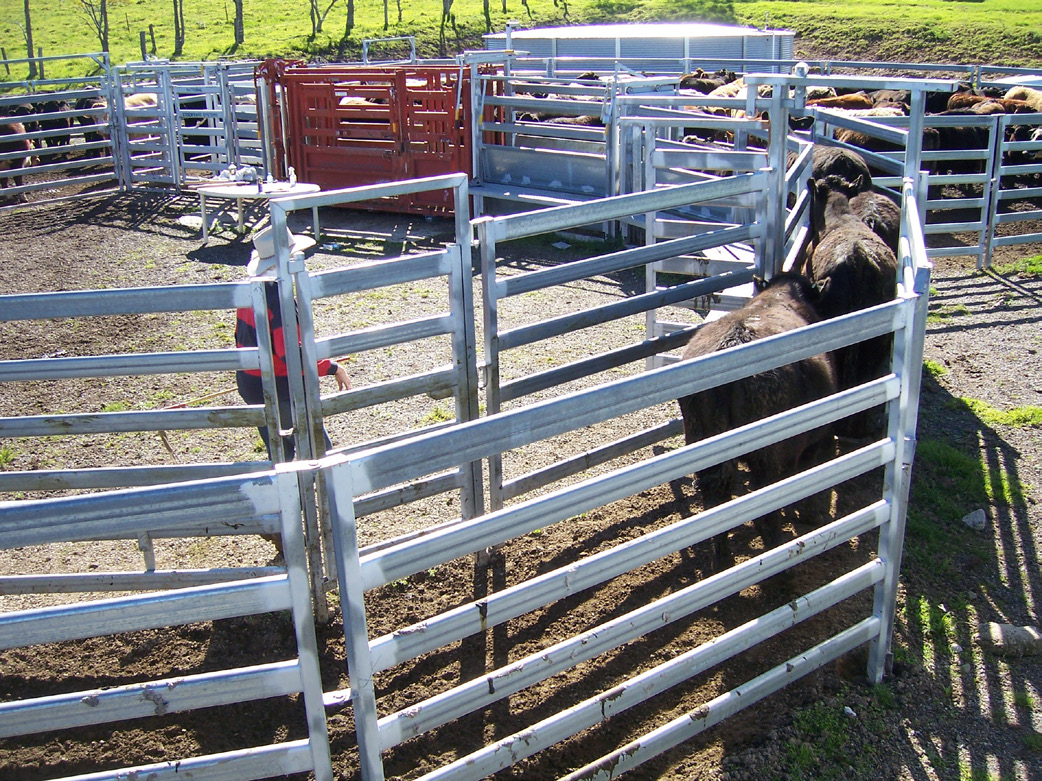We are constantly updating our range of standard plans / conventional force plans. We have 100’s of additional plans on file to cater for conventional cattle handling, low stress stock handling, combination sheep/cattle yard, and plans utilising our rotary forces. For enquiries please Contact Us.
| Holding Yards | Forcing Yards | |
|---|---|---|
| 100 - 300 kg | 1.3m² | 0.6m² |
| 300 - 500 kg | 1.4m² | 1.0m² |
| Over 500 kg | 1.6m² | 1.2m² |
| Cows & Calves | 2.2m² | 2.2m² |
Click on any plan image to enlarge on your screen. Click on background or the X on the top right corner to close.


(Many of the problems that people experience when working their cattle are poorly designed “force” yards and a lack of understanding of body position in relation to cattle flow, and cramming too many in the force).
PLANS ARE NOT ALL TO THE SAME SCALE ON YOUR COMPUTER SCREEN!
PLEASE CHECK EACH INDIVIDUAL PLAN FOR ACCURATE DIMENSIONS!
PLANS ARE NOT ALL TO THE SAME SCALE ON YOUR COMPUTER SCREEN!
PLEASE CHECK EACH INDIVIDUAL PLAN FOR ACCURATE DIMENSIONS!

PLANS ARE NOT ALL TO THE SAME SCALE ON YOUR COMPUTER SCREEN!
PLEASE CHECK EACH INDIVIDUAL PLAN FOR ACCURATE DIMENSIONS!
A well designed race entry yard and correct operator body position aids flow from the race entry yard into the race.
(Many of the problems that people experience when working their cattle are poorly designed “force” yards and a lack of understanding of body position in relation to cattle flow, and cramming too many in the force).
Andy Taylor from Scone required a second set of yards from us. Andy needed to work up to 500 dry cattle or 250 cows and calves.
Factors to consider were the existing laneway, slope of the ground, a calf race where he could use his existing cradle, and preferred truck access.
We adapted an existing plan that has resulted in all of Andy’s requirements being met.
Quote: Murray Schaefer “The literature and the web are littered with diagrams and explanations of flight zones and cattle movement. Many refer to exact diagrams of points of balance, edge of flight zone, movement initiation point, 45 degrees to the wither, 90 degrees to the eye, blind spots, edge of flight zone etc. etc.”
Basically to try to key hole every animal this way is garbage. All of the above will vary depending on the handler’s presence, the individual animal, temperature, time of day, yard surface, wind, previous association with handlers, dogs, timing and direction of handler movement etc. No two animals are the same. If you do not believe me then go and watch a campdraft. No two runs are the same.
I believe that efficient stock handling can be summed up as – correct position, timing and amount of pressure, and, correct timing and release of pressure.”